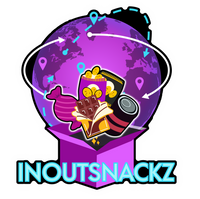In an age where consumer preferences can change with the swipe of a finger, the snack and beverage industry is increasingly relying on data analytics to stay ahead. No longer is it enough to release a new product and hope it resonates—brands are using deep, data-driven insights to guide decisions from flavour creation to marketing strategy and even store placement.
Whether it’s understanding which fruity soda is trending in Southeast Asia or how spicy chip preferences vary by region, data analytics is becoming the backbone of the modern snack market.
📊 The Power of Snack Industry Data
With the rise of e-commerce, social media, and point-of-sale systems, companies now have access to real-time information about consumer behaviour. Here’s how leading brands are using this data:
-
Flavour Forecasting
Through social listening tools and search analytics, brands can detect early interest in emerging flavors like yuzu, ube, or mala spice. Instead of relying solely on trend reports, they’re tapping into live online chatter and even tracking emoji usage related to food. -
Geo-Specific Product Development
By analyzing which products sell best in specific markets, companies can tailor their offerings. For example, some Korean snack manufacturers release region-exclusive products, such as seafood-flavoured crackers in coastal cities, based on local taste profiles. -
Performance-Based Inventory Decisions
Retailers like InOutSnackz can use sales data to reorder popular products and phase out slow movers quickly. This reduces waste and boosts profit margins while keeping the inventory aligned with customer interests.
🧃 Real-World Application: How Brands Are Using This
One clear example is the growing market for unique beverages like cheese foam teas and probiotic sodas. These products didn’t gain traction overnight—they became hits through data-backed development:
- Beverage companies used purchase history data and TikTok trend analysis to spot rising demand for “health-meets-fun” drinks.
- Some brands tracked checkout cart combinations to discover that customers buying spicy snacks also favored sweet milky beverages—fuelling a new wave of creative flavour pairings like mango milk or spicy plum soda.
🏪 What This Means for Retailers
Independent retailers can benefit from snack data insights, too. Here’s how:
1. Use Your Store’s Data
Even small online shops can monitor bestsellers, cart abandonment rates, and time-on-page to understand what customers want more (or less) of.
2. Stay Agile with Sourcing
Use trends from platforms like TikTok, Reddit, and Google Trends to anticipate upcoming cravings. If “ketchup ramen” or “matcha popcorn” starts trending, consider stocking those fast.
3. Inform Your Content Strategy
Use snack trend data to write blogs (like this one!), create social videos, or launch mystery boxes featuring “trending this week” themes. Pairing analytics with storytelling boosts engagement and SEO.
🔮 Where It’s All Going
As snack companies become more tech-savvy, expect to see:
- AI-generated flavour predictions
- Personalized snack recommendations through apps
- Automated restocking based on predictive analytics
- Collaborations shaped by audience overlap, like soda brands teaming up with anime franchises because of shared fanbases
All of this reflects a key truth: snacking is no longer just about taste—it’s about experience, identity, and timing, all of which data helps decode.
🍬 Final Thoughts: Turning Insights Into Action
For shops like InOutSnackz, embracing the role of data in the snack world can be a major competitive advantage. You don’t need a massive analytics team to benefit—just a willingness to observe, test, and respond.
Whether it’s noticing that pineapple-flavoured drinks spike in summer, or seeing a sudden run on jelly straws after a viral video, data gives you the ability to ride the wave rather than miss it.
As the industry gets smarter, the snacks do too—and so should your strategy.

